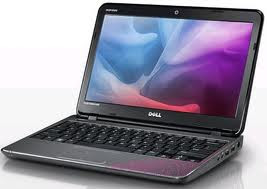What first strikes me about the Acer Aspire S3 is that it is a very thin and
light laptop. I've not compared it measure for measure with a Apple MacBook Air
but I'd guess it's very close to it. Turn the S3 over and it looks a bit too
much like the first generation Air, but open in up and start using it and
there's no doubt this is a Windows ? PC. Basically, this is a PC that you can
easily carry around with you almost anywhere and it's not going to be a bother.

The Acer Aspire S3 we had for testing was the higher-end model with Intel
Core i7 2637M 1.7GHz processor, 4GB RAM, and 120GB Intel SSD. The graphics are
Intel's Sandy Bridge processor graphics, HD 3000, and
the computer runs Windows 7 Home Premium. All this achieved a WorldBench score
of 102, which is not very impressive, but in actual use everything was quick
and snappy. I didn't do anything heavy like process video with the S3, and it's
not really the sort of computer you would do much of that with anyway. Keep in
mind though that this was the S3 with Core i7 processor. The Acer Aspire S3
lineup starts with a Core i3 processor.
One thing that particularly impressed with the Acer Aspire S3 was wakeup and
reboot times. When the system is running and you close the display and want to
get back into windows, it takes just over a second for the Windows login screen
to appear. Even a reboot is very quick and not something you have to loathe
anymore.
The outside of the very glossy 13.3-inch display (1366×768 pixels) is
brushed aluminum but the main part of the Acer Aspire S3 is made out of
something else, magnesium alloy I suspect. Although the two materials are very
close to each other in appearance and touch, I would have preferred Acer to
stick to one of them throughout, it would give the S3 a classier appearance as
well as feel, I think.
Acer has decided to put Dolby Home Theater on the Acer Aspire S3 with two
speakers on the bottom, one on the left and one on the right. Although the
sound is not bad for this type of computer I'd say it's nothing to boast about.
If you really care about great sound from the S3 you will get external speakers
or headphones anyway. Also on the outside we find two USB ports on the rear
next to HDMI port, AC adapter port and the exhaust from the processor fan. On
the left side there's a 3.5mm audio jack and on the right side you find a SD card
slot.
In terms of battery life the Acer Aspire S3 shut itself down after almost
exactly five hours of Wi-Fi work on battery saving mode. I was on the web,
writing, chat, Twitter, etc. doing my normal work without anything taxing the
system and I got a warning about battery running out after about four and a
half hours. Then at just about five hours, Windows shut itself down. That's not
bad considering the specifications and size but if Acer could tweak that to get
another hour out of the S3, that would be really good. As it stands, the S3 is
at least a credible option for a full day's worth of work for many of us.
My main complaint about the Acer Aspire S3 is the keyboard and trackpad. The
keyboard feels "swampy" (what an expression!), with little to no click
to it, which I don't like, and the way the arrow keys and page up and down are
organized is just a recipe for hitting the wrong key. Same goes for the return
key, which is partnered up with "\" and I can't tell you know many
times I typed "\" instead of return. The trackpad I kept hitting by
mistake and it clicked, scrolled and did all sorts of things even after I had
turned off almost all the gesture options; to me it seems there was clearly
something wrong there. I was told by an Acer representative that these were
both pre-production, and that at least the trackpad will be improved before
shipping and I hope that's true.












